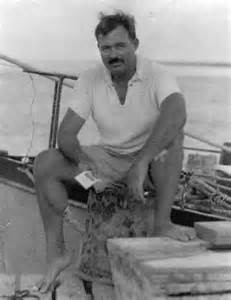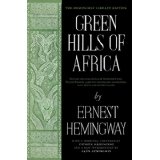Managers at Ernest Hemingway’s Key West home not heeding Mariel Hemingway’s plea to take the cats and go!

UPDATE: At around 1 p.m. PST, Dave Gonzales, executive director of the Ernest Hemingway Home and Museum in Key West, confirmed to CNN that he and nine other employees were staying through the fierce winds and rain expected with Hurricane Irma, saying the legendary author’s 1851 house, with its 18-inch-thick limestone walls is “the strongest fortress in all the Florida Keys.” Original story follows:
Actress Mariel Hemingway thinks it’s noble that the 72-year-old general manager of her grandfather’s historic Key West home wants to stay and try to safeguard the property and its famous six-toed feline residents as Hurricane Irma comes barreling in.
But she’s begging Jacqui Sands to leave the Ernest Hemingway Home and Museum to protect her life.

“I think you’re wonderful and an admirable person for trying to stay there and to try to save the cats and the house,” the Academy Award-winning actress said in a video posted by TMZ.
“This is frightening. This hurricane is a big deal,” she said, adding that she should, yes, save the cats if she can.
“Get in the car with the cats and take off,” she said.
The legendary author’s home, where he wrote “A Farewell to Arms” and “The Snows of Kilimanjaro,” is in the path of Irma, which is now categorized as a category 4 hurricane and is expected to hit the Florida Keys and other parts of southern Florida Saturday evening.
General manager Sands is tasked with securing the property and ensuring the safety of the 55 cats that freely roam there. Many of the cats are believed to be descendants of the author’s cat Snow White and have the distinctive six and seven toes on one paw.

Sands won’t be there alone with the cats. She’ll be joined by nine other employees, who have helped to stock up on food, water and medication for the cats and to board up windows and doors. They also have three generators to keep the power and air conditioning going. The other employees couldn’t leave because either they don’t have a car or couldn’t find a flight out, she said.
That confidence was echoed by the museum’s executive director Dave Gonzales, who told the Houston Chronicle that the 1851 French colonial home has 18-inch thick limestone walls that allow it to withstand dangerous storms.
“This isn’t our first hurricane. We’re here to stay,” Gonzalez said.
In an interview with CNN Friday afternoon, he added that at 16 feet above sea level, the house is not in a flood zone. As for the cats, he said they are adept at surviving storms, and the home has never lost a cat to a hurricane.
“Cats know naturally when to go. As soon as the barometric pressure drops, they come in,” Gonzalez said. “They know before humans do when it’s time to get in.”

But Mariel Hemingway isn’t so confident and points out that “it’s just a house.”
She acknowledged that “none of us likes to lose things we treasure” but “ultimately you’ve got to protect your life.”
Hemingway then referred to that famous idea espoused by her grandfather in his prose.
“Courage is grace under pressure,” she said. In this case, “I think this is taking things a little too far.”




































